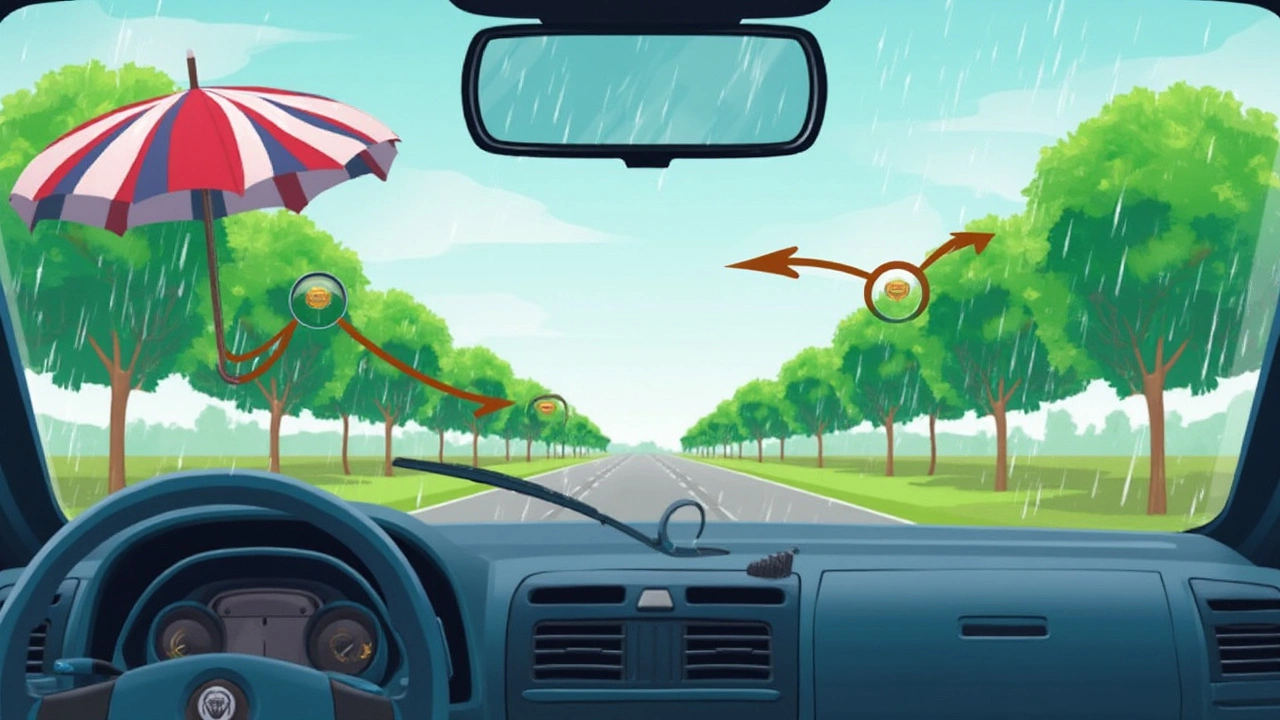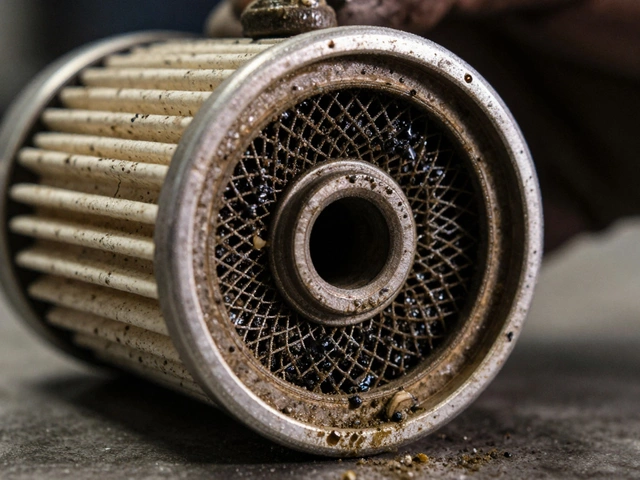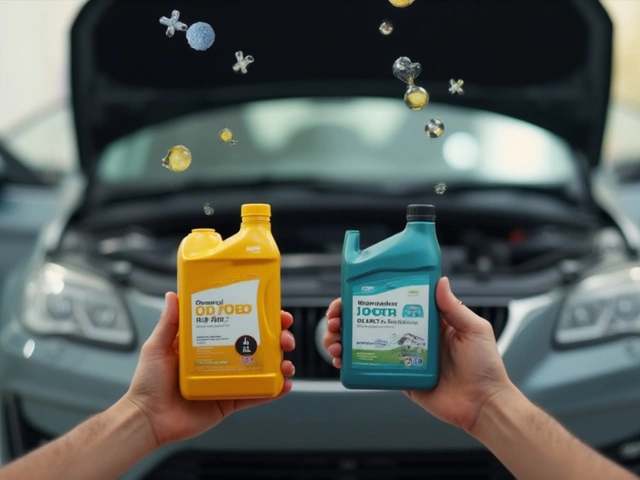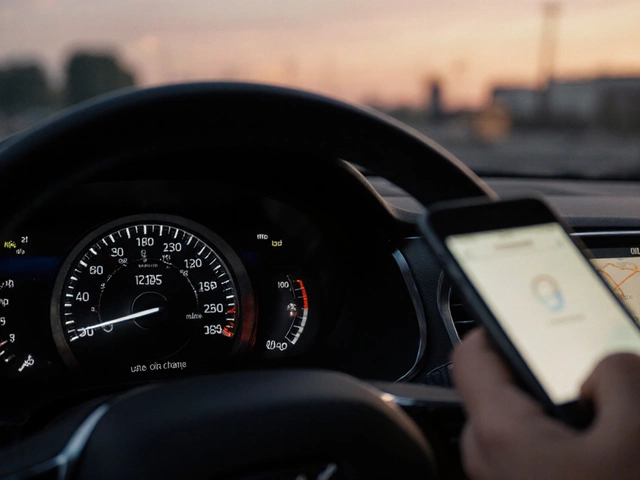Ever tried driving in the rain with busted wipers? It's like playing a video game on hard mode—except your safety's actually at risk. That thin strip of rubber swiping across your windshield? It's not just there for show. A windscreen wiper is what keeps your view clear, wiping away rain, bugs, dirt, and sometimes even a stubborn bird mess or two.
Most drivers only think about wipers when they're already halfway blind on a rainy drive. Here's the thing: good wipers mean more than just a clean windshield. They give you clear vision, which means safer driving. Without them, glare and water smear can turn a short trip into a white-knuckle trek.
If your wipers are streaky, squeaky, or just not moving like they should, it's worth checking them now—not waiting for an epic downpour. Up next, let's break down how these simple gadgets actually do their job, because knowing how they work can save you a lot of hassle down the line.
- The Essential Job of Windscreen Wipers
- How Windshield Wipers Work
- Common Mistakes and Easy Fixes
- Tips to Keep Your Wipers in Top Shape
The Essential Job of Windscreen Wipers
You probably don’t give your windscreen wiper much thought—until you catch yourself squinting through a smeared windshield in heavy rain. The main job here is dead simple but vital: keep your glass clear so you can see the road, no matter what the weather throws at you. It’s not just about comfort; it’s about your safety and everyone else’s around you.
On a basic level, wiper blades brush away water, mud, bugs, and anything else that lands on the windshield. Without them, glare, dirt streaks, or even morning dew can turn your view into a blurry mess. Poor visibility is actually a major cause of on-road accidents when it rains or snows. That’s why in places like the UK, it’s illegal to drive with damaged or missing wipers.
You might not realize windscreen wipers also help in super small ways that add up. Ever notice how in early mornings your windshield gets foggy? Wipers work with washer fluid to clear it off so you don’t drive blind. Even the sun’s glare hits differently on a clear windshield versus one gunked up with dust and bugs.
Here’s a quick look at why working windscreen wipers matter:
- Keep your vision clear in rain, snow, or dust storms
- Reduce glare from lights and the sun
- Swipe away bug splats and muddy streaks fast
- Keep your windshield clean for cameras and sensors in newer cars
And here’s a cool stat: Tests by the National Highway Traffic Safety Administration show that almost 23% of weather-related car crashes in the US are connected to poor visibility, which includes bad windshield cleaning or faulty wipers.
In short, working wipers don’t just make your drive nicer—they make it a lot safer. So if you haven’t checked yours lately, give them a look before your next drive.
How Windshield Wipers Work
If you've ever wondered what happens when you flick that wiper switch, here's the lowdown. Your car’s windscreen wiper setup is a mix of simple mechanics and a bit of clever engineering. Flip the lever, and you’re connecting the wipers to a tiny electric motor hiding under the hood, usually at the base of the windshield.
This motor drives a little arm (called a linkage) that turns the rotational movement into the back-and-forth motion of the wiper blades. Most cars use a system called a crank and connecting rod, kind of like how a bicycle pedal turns the wheel, to move both wipers at the same time.
The rubber blades are the part that actually touches the glass. They're made to hug the curve of your windshield and push away water, dirt, or snow with every pass. The speed settings—most cars have at least two, sometimes three or four—just adjust how fast that motor works. Some fancier cars even have rain sensors that automatically speed up or slow down your wipers depending on how heavy the rain gets.
- Almost every wiper blade is designed to last about 6 to 12 months, depending on weather and how much you use them.
- Wipers aren't just for rain. They clear away pollen, sand, and even snow if your car has heated wipers.
- Windshield washer fluid sprays through teeny nozzles and the wipers finish the job, making sure that all the muck gets pushed aside and your view stays clear.
Here’s a quick look at the main parts involved in a modern windscreen wiper system:
- Wiper blades (the rubber strip)
- Wiper arm (holds the blade and moves it)
- Wiper motor (gives the power)
- Linkage (connects the motor to the arm)
- Control switch (lets you pick the speed or turn it on/off)
- Washer pump and nozzles (for fluid spray)
Fun fact: Some wipers can sweep back and forth over 1.5 million times in their lifetime. That’s a ton of wiping! Take care of them, and they’ll keep your view way clearer—no matter what’s coming at your windshield.

Common Mistakes and Easy Fixes
It’s wild how many people mess up simple windscreen wiper care or use. A lot of folks don’t realize they’re making their wipers wear out way faster—or worse, ruining their view and risking a fender bender. Here’s where things usually go sideways, and how to fix them without breaking the bank.
- Running Wipers on a Dry Windshield: Don’t hit the wipers unless there’s enough water, washer fluid, or rain on the glass. Dry wiping can shred the wiper blades in no time, leaving you with streaks and scratches.
- Ignoring Streaks and Skipping Blades: If your blades leave tracks or skip across the glass, they’re shot or the rubber’s torn. Don’t just put up with it. Grab new blades—the swap takes less than a minute for most cars.
- Forgetting Regular Checks: Most people barely ever look at their wipers until they’re in trouble. Peek at the blades every couple of months. Look for splits, bent frames, or chunks of rubber missing. If you see anything, swap them out.
- Using Hot Water to De-Ice: Splashing hot water on a frozen windshield can crack the glass. Instead, use de-icer spray and gently lift the wipers once the blades are free.
- Ignoring Weird Noises: Squeaky or chattering noises? Sometimes, that’s a dirty blade or windshield. Clean both with a damp cloth. If the sounds don’t go away, replace the blade.
Here’s a quick look at some numbers that might surprise you:
| Common Issue | Percent of Drivers Affected |
|---|---|
| Delayed wiper replacement | 60% |
| Streaky windshield complaints | 45% |
| Running dry wipers | 30% |
You don’t need to be a car expert to keep your windscreen wipers working right. Keep an eye out for these blunders, and you’ll avoid most of the hassle. Plus, you’ll never get caught in a storm with useless blades again.
Tips to Keep Your Wipers in Top Shape
If you want your windscreen wiper to actually work when you need it, a little bit of regular attention goes a long way. Most drivers forget about their wiper blades until they’re noisy or useless, but just five minutes now and then can make all the difference.
- Change your wiper blades at least once a year. Heat, sun, and freezing weather all damage the rubber. If you live in a place that sees a lot of sun or snow, check them every six months.
- Wipe the rubber clean every couple of weeks. Dirt, pollen, and dead bugs wear them out fast. A simple swipe with a damp cloth or paper towel can double their lifespan.
- Don’t use wipers on dry glass. That screech isn’t just annoying—it’s killing the rubber edge and your windshield over time. If something’s stuck, spray washer fluid first.
- Lift wipers away from the windshield in winter. This keeps them from freezing in place and tearing when you pull them up.
- Use the right washer fluid. Water alone isn’t enough. Special washer fluids keep gunk off the glass and stop freezing in cold weather.
Ever wondered how often people actually change their windscreen wiper blades? Here’s what a recent auto service survey found:
| Blade Replacement Frequency | Drivers (%) |
|---|---|
| Once a year or less | 62% |
| Every 6 months | 21% |
| Only when they notice trouble | 17% |
Most folks are waiting too long! Don’t be that person stuck in a storm with streaks and squeaks instead of a clear view. A quick check every season is a solid habit. Next time you’re filling up, pop the hood and take a peek. It’s an easy win for safer driving and a less stressful ride.






